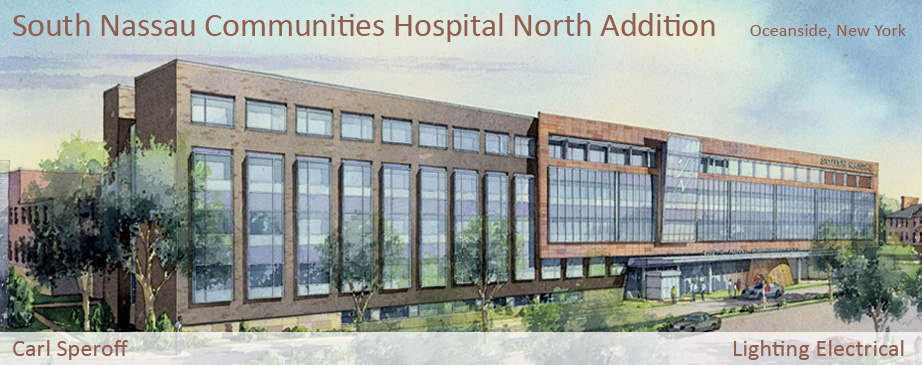The following are references used in completing the research and design for this senior thesis:
ASHRAE 1997 HVAC Fundamentals Handbook. American Society of Heating, Refrigerating, and Air‐Conditioning Engineers, Inc. Atlanta, GA. 1997.
ASHRAE Standard 90.1‐2007: Energy Standard for Buildings Except Low‐Rise Residential Buildings. American Society of Heating, Refrigerating, and Air‐Conditioning Engineers, Inc. Atlanta, GA. 2007.
Cutler‐Hammer 2006 Consulting Application Guide, 14th Edition. Eaton Electrical. Moon, PA. 2006.
The IESNA Lighting Handbook: Reference & Application, 9th Edition. Illuminating Engineering Society of North America. New York, NY. 2000.
The IESNA Lighting Handbook: Reference & Application, 10th Edition. Illuminating Engineering Society of North America. New York, NY. 2011.
National Electric Code: 2008. National Fire Protection Association. Quincy, MA. 2004.
The following are references used in completing the research related to the M.A.E. area of study:
M.R. Smith, E. E. Cullnan, C. I. Eastman, "Shaping the Light/dark Pattern for Circadian Adaptation to Night Shift Work," Physiology & Behavior 95.3 (2008): 449-56, Online, Elsevier.
"Light at Night and Human Health," Http://www.eere.energy.gov/. U.S. Department of Energy, Jan. 2010. Web. Jan. 2011. <http://apps1.eere.energy.gov/buildings/publications/pdfs/ssl/light_at_night.pdf>.
C.S. Pechacek, M. Andersen, S.W. Lockley, “Preliminary Method for Prospective Analysis of the Circadian Efficacy of (Day)Light with Applications to Healthcare Architecture,” LEUKOS - The Journal of the Illuminating Engineering Society of North America. vol 5 (1). pp. 1-26, July 2008.
M. Rea, "Optics and Photonics News - A Second Kind of Light." Optics InfoBase. Oct. 2006. Web. 09 Jan. 2011. <http://www.opticsinfobase.org/OPN/abstract.cfm?URI=OPN-17-10-34>.
The IES Light and Human Health Committee, Light and Human Health: an Overview of the Impact of Optical Radiation on Visual, Circadian, Neuroendocrine, and Neurobehavioral Responses, New York, NY: Illuminating Engineering Society of North America, 2008. Print.
A. Grundy, et al, “Light intensity exposure, sleep duration, physical activity, and biomarkers of melatonin among rotating shift nurses,” Chronobiology International, Informa Care, Online, February 6, 2009, February 12, 2011.
S. W. Lockley, G. C. Brainard, C.A. Czeisler, “High Sensitivity of the human Circadian Melatonin Rhythm to Resetting by Short Wavelength Light, The Journal of Clinical Endocrinology & Metabolism, 2003, 88(9), pp. 4502-4506
E.K. Vissar, D.G. Beersma, S. Daan, “Melatonin suppression by light in humans in maximal when the nasal part of the retina is illuminated.” Journal of Biological Rhythms, 1999. 14(2): pp.116-121.
M. Ruger, et al., “Nasal versus temporal illumination of the human retina: effects on core body temperature, melatonin, and circadian phase.” Journal of Biological Rhythms, 2005. 20(1): pp. 60-70.
M.R. Smith, L.F. Fogg, C.I. Eastman, “Practical Interventions to Promote Circadian Adaptation to Permanent Night Shift Work: Study 4,” Journal of Biological Rhythms, 2009, 24: pp.161-172.
C. Lee, M.R. Smith, C.I. Eastman, “A compromise phase position for permanent night shift workers: circadian phase after two night shifts with scheduled sleep and light/dark exposure,” Chronobioloy International , Informa Care, Online, February 6, 2006, February 12, 2011.
D.J. Skene, “Optimization of Light and Melatonin to Phase-Shift Human Circadian Rhythms,” Journal of Neuroendocrinology, 2003, Vol. 15, pp. 438-441.
E.K. Baehr, L.F. Fogg, C.I. Eastman, “Intermittent bright light and exercise to entrain human circadian rhythms to night work,” The American Physiological Society, 1999, Online, ajpregu.physiology.org, 19 Jan. 2011.
C. Cajochen, et. al., “Dose-response relationship for light intensity and ocular and electroencephalographic correlates of human alertness,” Behavioral Brain Research, 2000, pp.75-83. Elsevier.
